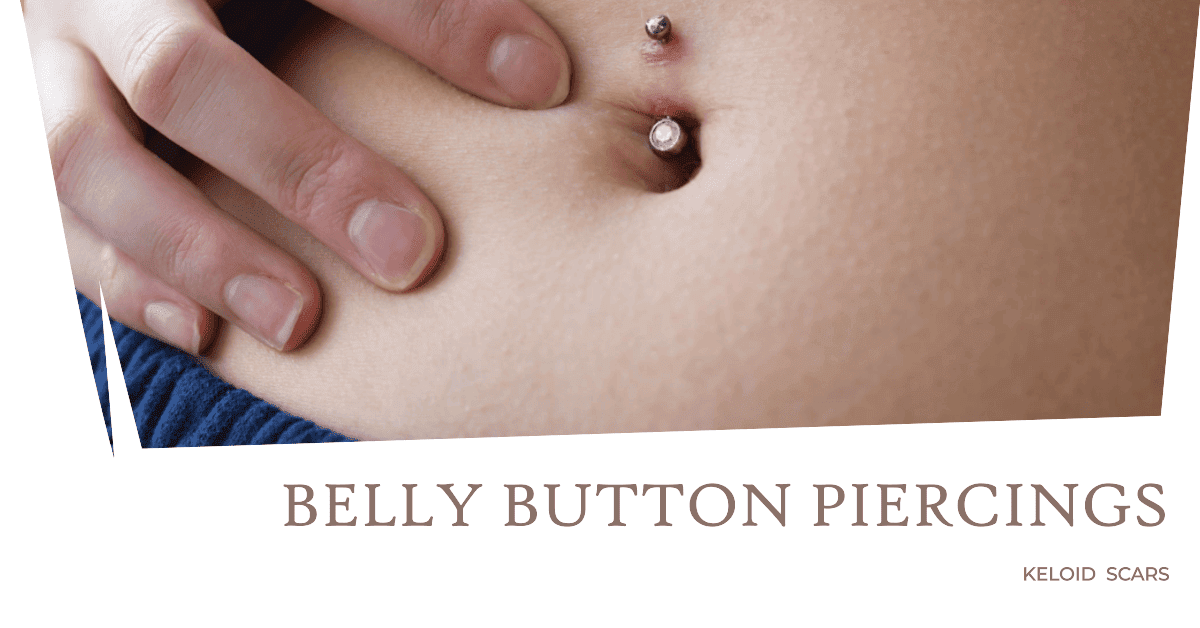Introduction:
Belly button piercings have gained popularity as a fashionable and trendy form of self-expression. However, one potential issue that can arise from belly button piercings is the formation of keloids. These raised, fibrous scars can be a cause of concern for individuals seeking a flawless and healed piercing. In this comprehensive guide, we will explore the topic of belly button piercing keloids, including their prevention, identification, and available treatment options. Whether you’re considering getting a belly button piercing or currently dealing with keloid formation, this article aims to equip you with the knowledge to prevent and heal belly button piercing keloids effectively.
Understanding Keloids
Keloids are an abnormal response of the body to skin injuries, such as piercings. They extend beyond the original wound site and result from an overproduction of collagen during the healing process. In the case of belly button piercings, keloids can form as a result of genetic predisposition, excessive scar tissue formation, or improper aftercare. It’s essential to understand the factors contributing to keloid formation to effectively prevent their occurrence.
Prevention of Belly Button Piercing Keloids
Prevention is key when it comes to belly button piercing keloids. By following proper aftercare practices, you can significantly reduce the risk of keloid formation. Cleaning the piercing with a mild saline solution and avoiding harsh chemicals or excessive manipulation are vital steps. Additionally, choosing high-quality jewelry made of hypoallergenic materials can minimize the risk of irritation and keloid development.
Recognizing Belly Button Piercing Keloids
Keloids in belly button piercings have distinct characteristics. They often appear as raised, thickened scars that extend beyond the boundaries of the piercing hole. It’s important to differentiate keloids from hypertrophic scars, which are similar but tend to regress over time. Recognizing the signs of keloids can help you take appropriate action promptly.
Healing and Treatment of Belly Button Piercing Keloids
While keloids can be challenging to treat, various options are available for healing and management. Non-invasive treatments include silicone gel sheets and topical creams, which help flatten and soften keloids over time. Corticosteroid injections can also be effective in reducing the size and redness of keloids. In more severe cases, laser therapy or surgical removal may be considered. It’s crucial to consult a professional to determine the most suitable treatment approach based on the specific characteristics of your keloid.
Additional Tips for Keloid Prevention and Healing
In addition to proper aftercare and treatment options, certain lifestyle changes can aid in keloid prevention and healing. Maintaining a healthy immune system through balanced nutrition and regular exercise can support the body’s natural healing processes. Managing stress and avoiding potential triggers can also contribute to the overall well-being of the piercing and help prevent keloid formation.
FAQ’s –
Q1. Do belly button piercing keloids go away?
A. While keloids can be persistent, they may not go away on their own. Keloids are considered a form of abnormal scarring and tend to be more challenging to treat than regular scars. However, with proper treatment and care, the size, redness, and symptoms of keloids can be significantly reduced.
Q2. How do you get rid of a keloid on your belly button?
A. Treating a keloid on your belly button involves various approaches. Non-invasive options include applying silicone gel sheets or using topical creams to soften and flatten the keloid over time. Corticosteroid injections can also help shrink the keloid and reduce its appearance. In more severe cases, laser therapy or surgical removal may be necessary. It’s essential to consult a healthcare professional or dermatologist to determine the most suitable treatment for your specific keloid.
Q3. Why is there a keloid on my belly piercing?
A. Keloids can form on belly piercings due to a variety of factors. They are an overgrowth of scar tissue that occurs as a result of an abnormal healing response. Keloids may develop if there is excessive collagen production during the healing process or if the body has a genetic predisposition to keloid formation. Poor aftercare, such as inadequate cleaning or trauma to the piercing site, can also increase the risk of keloid formation.
Q4. Do keloids from piercings go away?
A. Keloids from piercings may not completely go away on their own, but they can be effectively managed and their appearance reduced. Treatment options, such as silicone gel sheets, topical creams, corticosteroid injections, laser therapy, or surgical removal, can help minimize the size and symptoms of keloids. However, it’s important to note that the success of treatment can vary from person to person, and results may differ depending on the individual’s specific keloid characteristics.
Conclusion:
Belly button piercing keloids can be a source of frustration and concern for individuals seeking a flawless and healed piercing. However, with the right knowledge and proactive measures, keloids can be prevented and effectively managed. By following proper aftercare practices, recognizing the signs of keloids, and seeking professional advice when necessary, you can take control of your belly button piercing journey and minimize the risk of keloid formation. Remember, prevention is key, but in the event that keloids do form, there are treatment options available to help you on your path to healing.
Also read, Can You Smoke Mushrooms

Hey, y’all! I’m Akshay!
I’m SO excited you’re here! I’m super passionate about nutrition and specialize in teaching others how to lose weight through healthy, low-carb eating along with Yoga and exercises. Here at Yourfitnessgoal, we believe in quality over quantity and that diet is EVERYTHING when it comes to your health and well-being. In short, we believe in a Fit and healthy lifestyle.

